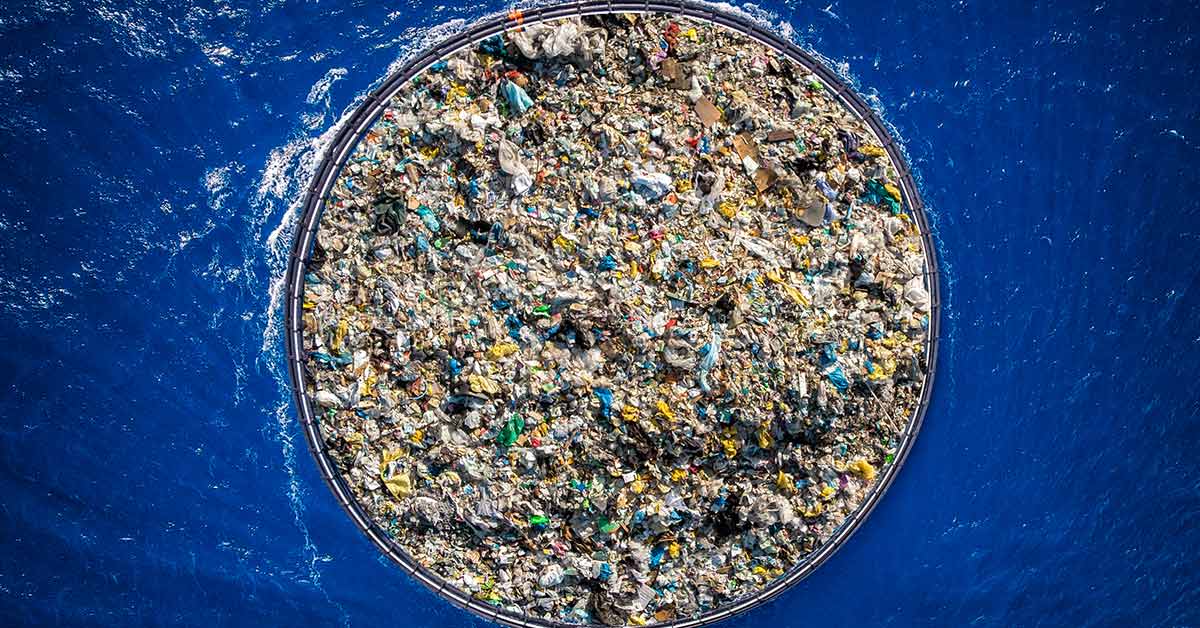When Boyan Slat was 18, he planned to rid the oceans of plastic. About ten years later, Slat is 27, an inventor, and the founder of the Ocean Cleanup, a nonprofit that plans to remove 90% of the floating plastic in the ocean by 2040. This plan seemed incredible at first. The first plastic-catching device prototype broke in 2018. A newer prototype in 2019 succeeded in catching plastic, but the organization estimated that hundreds of the devices would be needed to clean the ocean. Researchers began to doubt whether the organization would be able to succeed in its goal.
But this year, the Ocean Cleanup created a new device, dubbed System 002, or Jenny. This one beat all of its tests without malfunctioning. Additionally, Jenny hauled almost 20,000 pounds of garbage out of the Pacific Ocean, proving that the plastic could be eventually all cleared up. “Holy mother of god,” Slat tweeted that day. “It all worked!!!“
How Jenny Works
The Pacific Ocean Garbage Patch floats between Hawaii and California and it teems with trash from fishing nets to microplastics. All of which is harming the environment. For a long time, researchers thought it would be impossible to fully dismember the Garbage Patch, but the Ocean Cleanup wants to prove them wrong.
The original plastic cleaner device looked like a 330-float long, floating pipe. Meanwhile, this new version is more flexible and shaped like a U. When the nets attached to it fill with plastic, about every few weeks, the crew will empty it onto a boat and set it back into the ocean.
Read: Student Creates Plastic Made From Orange Waste That Biodegrades In 90 Days
When the garbage is shipped back to shore, the plastic parts will get recycled. The organization is turning the plastic into sunglasses, which proceeds will go to the cleanup. Furthermore, the Ocean Cleanup hopes to partner with consumer brands to make and sell more recycled items.
Slat says that 10 Jennys will be required to clean up half of the Great Pacific Garbage Patch in five years. Just one Jenny can capture about 10,000 to 15,000 kilograms of trash. This includes large containers, fishing nets, microplastics, and other forms of floating garbage.
Jenny is also designed to be animal friendly. The boats sail at about 1.5 miles an hour, so the marine animals could easily swim around them. Plus, there are cameras, lights, escape routes, and systems in place to guide the creatures. Crew members keep an eye on the interactions of the marine life on the Jenny. [1]
Read: Four Solar-Powered River Barges Are Cleaning Up The World’s Most Polluted Rivers
Preventing Plastic From Entering the Ocean
The biggest flaw of Jenny is that it only captures plastic floating near the surface. However, further research suggests that there is about 30 times as much trash at the bottom of the ocean. Another flaw is that this machine doesn’t prevent plastic from getting tossed into the ocean to start with. About 24 trillion pounds of plastic is poured into the ocean every year, according to a 2020 study from the Pew Charitable Trusts. [2]
“Without meaningful change, about 4 billion people worldwide are likely to be without organized waste collection services by 2040, contributing significantly to the projected amount of ocean plastic pollution,” Pew said in a press release. “Closing this gap would require connecting more than 500,000 people to collection services per day until 2040.”
Making Positive Changes
Thirdly, the boats that pull the Jenny need fuel that impacts the environment negatively. The initial design of the device was meant to collect plastic passively, but that allowed the trash to fall back into the ocean. Therefore, the Ocean Cleanup states it’s buying carbon credits to offset the emissions from the boats.
“Once the plastic has gotten into the open ocean, it becomes very expensive and fossil-fuel intensive to get it back out again,” Miriam Goldstein, the director of ocean policy at the think tank Center for American Progress. [3]
However, Slat says that his team is still working to address this concern. “Lots of things still to iron out but one thing we now know: deploy a small fleet of these systems, and one *can* clean it up.“
Keep Reading: The Guys Who Sell Ocean Plastic Bracelets Are Closing in on 17 Million Pounds of Waste Pulled From the Sea
Sources
- “Nearly 20,000 pounds of trash removed from one of the biggest accumulations of ocean plastic in the world.” CBS News. Li Cohen. October 16, 2021
- “Research Finds Plastic Flows Into the Ocean Expected to Triple by 2040—but Immediate Action Could Stem Tide by More Than 80%.” Pew Trusts. July 23, 2020
- “A half-mile installation just took 20,000 pounds of plastic out of the Pacific — proof that ocean garbage can be cleaned.” Business Insider. Aria Bendix. October 15, 2021

